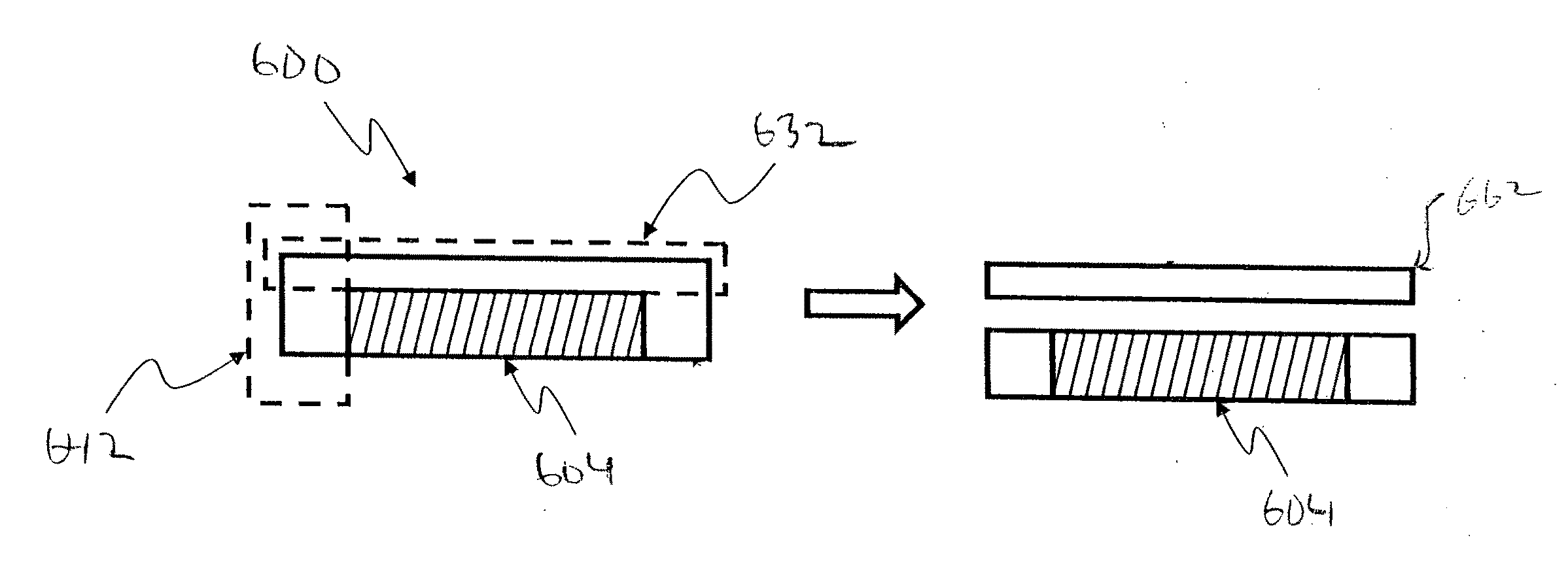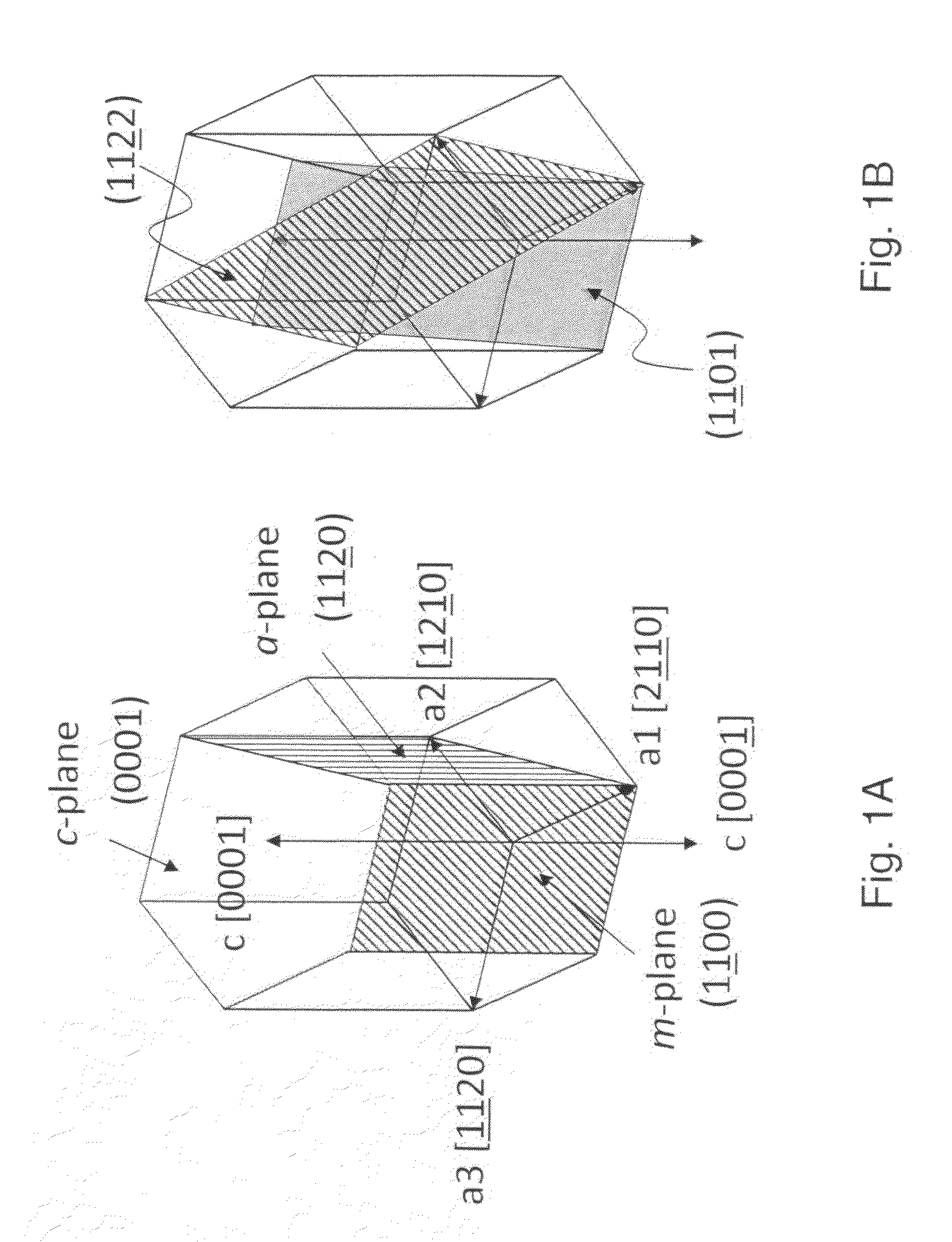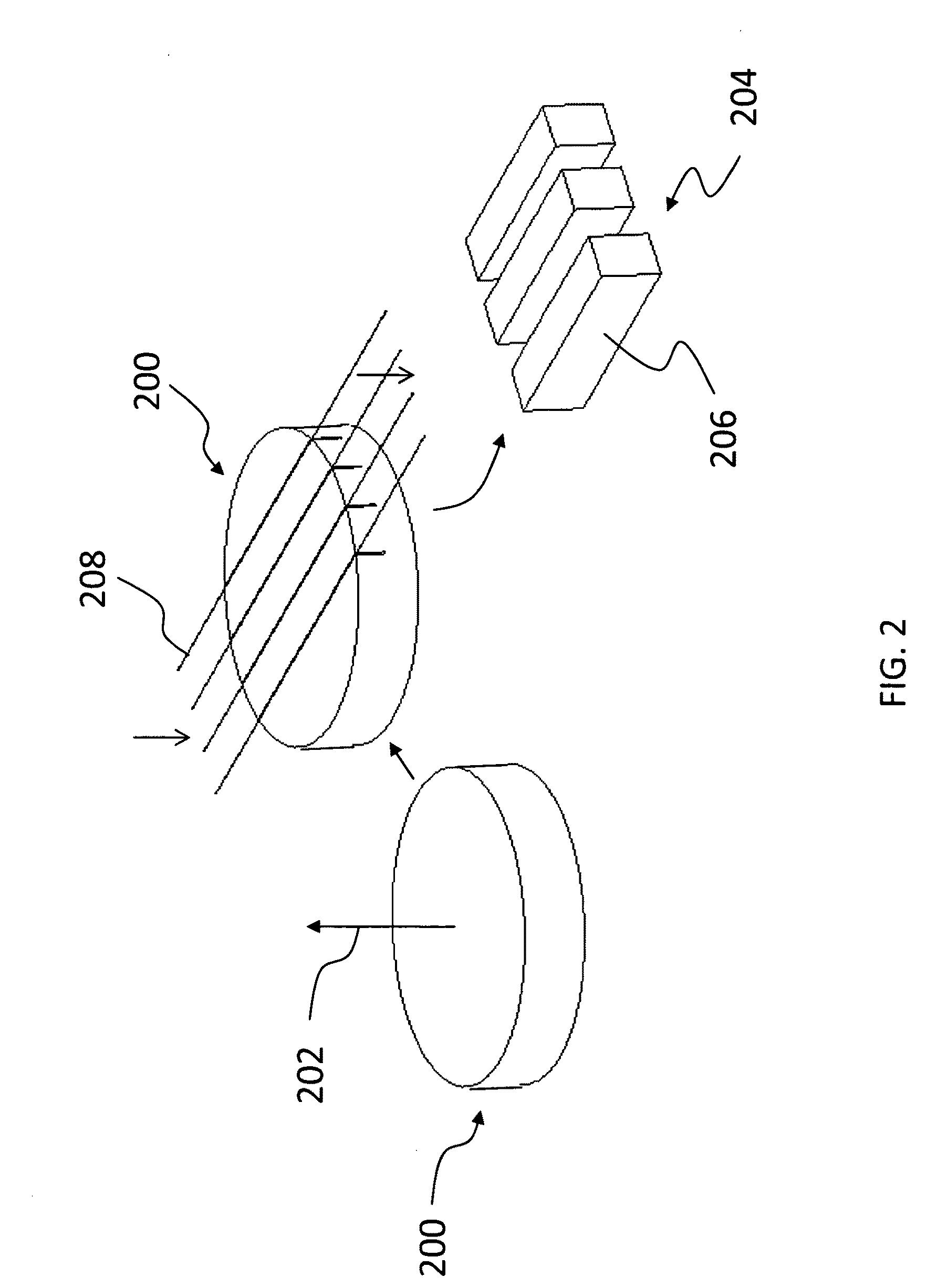Non-polar and semi-polar GaN substrates, devices, and methods for making them
a technology of non-polar and semi-polar gan, which is applied in the direction of crystal growth process, polycrystalline material growth, chemically reactive gas growth, etc., can solve the problems of reducing the recombination efficiency of electron-hole pairs, affecting the performance of nitride-based devices, and piezoelectric polarization
- Summary
- Abstract
- Description
- Claims
- Application Information
AI Technical Summary
Benefits of technology
Problems solved by technology
Method used
Image
Examples
example 1
[0042]The following example is provided to illustrate an embodiment of the invention. Using the HVPE growth process, non-polar seed crystals were generated through the growth of thick GaN boules grown on AlN nucleation layers on sapphire substrates. These boules were grown to a thickness of ˜1 cm. The sapphire substrates may be subsequently removed by any suitable technique. FIG. 2 is a schematic representation of an as-grown GaN boule 200 without the underlying sapphire and AlN nucleation layer. The growth of the GaN crystal along the c-axis ([0001] direction) to a thickness of, for example, about 1 cm, is indicated by an arrow 202. Following fabrication of the boules 200, they were prepared for slicing along the c-axis to create a- and m-plane substrates 204. The GaN crystalline directions in each boule 200 were identified via X-ray diffraction prior to slicing on a fixed-abrasive multi-wire saw. The sample boule 200 was mounted on an adjustable fixture in an X-ray diffractometer ...
example 2
[0053]The following example is provided to illustrate another embodiment of the invention. The GaN boules and non-polar seed crystals formed pursuant to this example may be formed as described above in conjunction with FIGS. 2 and 3, and thus can be expected to exhibit the same or similar excellent properties and characteristics mentioned below for this example. Accordingly, the HVPE growth process may again be utilized used to generate non-polar seed crystals through the growth of thick GaN boules grown on AlN nucleation layers on sapphire substrates. GaN boules may be grown to a thickness of, for example, ˜1 cm. Following fabrication of the boules, they are prepared for slicing along the c-axis to create m-plane substrates. The GaN crystalline directions in the boule are identified via X-ray diffraction prior to slicing on a fixed-abrasive multi-wire saw. For the alignment measurement, the boule is mounted on an adjustable fixture in an X-ray diffractometer and the orientation of ...
example 3
[0061]The following example is provided to illustrate another embodiment of the invention. As in the case of the implementations of Example 2, the GaN boules and non-polar seed crystals formed pursuant to the present example may be formed as described above in conjunction with FIGS. 2 and 3, and thus can be expected to exhibit the same or similar excellent properties and characteristics mentioned above. Accordingly, the HVPE growth process may again be utilized to generate non-polar seed crystals through the growth of thick GaN boules using the process previously described. For example, the size of the m-plane substrates resulting from slicing the GaN boule, and following preparatory steps as described above, may be approximately 5 mm in the [0001] direction and 10 mm in the [1120] direction, and approximately 450 μm thick in the [1100] direction. These substrates may then be utilized as seed crystals for the re-growth process. FIG. 8 schematically depicts a top surface 816 of one s...
PUM
 Login to View More
Login to View More Abstract
Description
Claims
Application Information
 Login to View More
Login to View More - R&D
- Intellectual Property
- Life Sciences
- Materials
- Tech Scout
- Unparalleled Data Quality
- Higher Quality Content
- 60% Fewer Hallucinations
Browse by: Latest US Patents, China's latest patents, Technical Efficacy Thesaurus, Application Domain, Technology Topic, Popular Technical Reports.
© 2025 PatSnap. All rights reserved.Legal|Privacy policy|Modern Slavery Act Transparency Statement|Sitemap|About US| Contact US: help@patsnap.com



